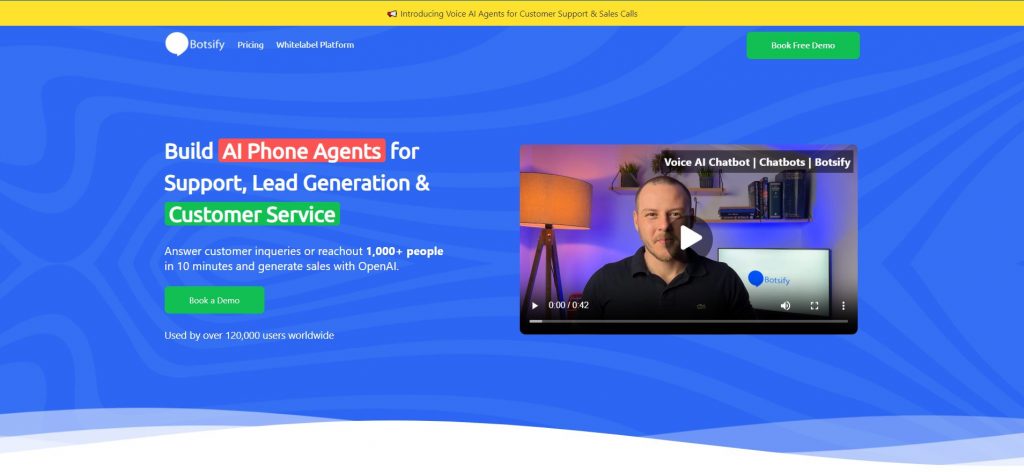Learn about Important Customer Experience Metrics to Form an Effective Strategy

You can’t shape an effective marketing strategy without deeply analyzing customer experience metrics. By tracking the correct CX metrics, marketers can better understand the customer journey and identify their pain points more accurately. This also makes it easier to optimize touchpoints, which in turn helps improve loyalty and revenues.
Experts also believe that measuring various CX metrics is one acceptable way of gaining insights into customer sentiment. This enables marketers to spot areas for improvement. For instance, these metrics make it easier to find systemic issues that may damage loyalty or increase churn risk.
The good thing is that CX technology is evolving quickly, so tracking those metrics is easier. You can also have a robust SEO tool in your arsenal to keep an eye on those changing metrics. And it’s easy to make a choice, considering you can find platforms offering SEO Tool Reviews. All you have to do is compare those tools and pick ones that can perform site-wide audits, pick social media engagement signals, track bounce rates, and perform other tasks to help you gauge your marketing campaign’s performance.
In short, customer experience (CX) has always been significant but has become a key differentiator, with 86% of consumers willing to pay more for a great experience. An SEO tool will help, but you need to learn what metrics to track. Here’s what you should focus on:
1. Net Promoter Score (NPS)
NPS is a percentage calculated from data gathered by using a 1-10 scale for responses to ‘How likely are you …’ type questions. If you subtract the % of Detractors from the % of Promoters, you will get a Net Promoter Score. It stands out among the most helpful customer experience metrics.
NPS monitors the customer experience from the perspective of loyalty. It asks users to consider how likely they are to revisit a brand (for customer retention) and their willingness to advocate for it (organic promotion). It, therefore, benefits marketing by leveraging ‘word of mouth’ and using satisfied customers to expand brand visibility.
The metric uses three categories:
- Promoters: score 9-10. These are loyal enthusiasts who are likely to revisit.
- Passives: score 7-8. Customers are satisfied but not committed and open to offers from elsewhere.
- Detractors (0-6). These customers are not satisfied, and their word-of-mouth recommendation is likely to be negative.
NPS insights inform marketing strategies in several ways:
- identifying areas for improvement in product, service, or strategizing customer experience
- segmenting customers into categories for targeted marketing
- prioritizing a customer-centric approach to decision-making
- leveraging Promoters as brand advocates by encouraging them to share testimonials or take part in referral programs
- proactive engagement, using NPS to address issues promptly and proactively engaging with Detractors.
2. Customer Satisfaction (CSAT) Score

The CSAT score considers the customers’ overall experience by asking how satisfied they are. Like NPS, customers respond using a scale of 1-5 or 1-10.
The CSAT metric is useful for:
- gauging the quality of the customer experience
- distinguishing the satisfied customers from the less satisfied customers
- predicting customer churn (lost customers)
- unearthing gaps between the customers’ expectations and their experience
- benchmarking performance against others in the industry
It’s possible to use CSAT Data to identify areas for improvement, which helps get better results for your marketing campaigns.
Much like NPS, CSAT data can inform an entire marketing strategy, identifying the most successful as well as the weakest areas. It also informs decision-making regarding brand development and growth.
The CSAT data can:
- be showcased in marketing content as social proof of providing a positive customer experience
- identify highly satisfied customers to encourage referrals and testimonials
- facilitate tailoring the customer experience by analyzing scores in each customer segment
- be used in conjunction with other metrics, such as NPS and CES
3. Customer Effort Score (CES)

CES evaluates the ease with which customers interact with the company. It measures the effort required to accomplish key customer service tasks, such as resolving issues, making a purchase, or finding information.
CES asks customers to rate the ease of their experience on a scale ranging from ‘very difficult’ to ‘very easy’. The easy range has the higher score. A low CES, on the other hand, would indicate the customer has had difficulty.
CES insights are beneficial. Using them, marketers can:
- streamline procedures
- enhance self-serve options
- reduce response times
- optimize for mobile friendliness
CES helps marketers create an effortless user experience. A feature that boosts retention and reduces churn. It also drives growth in competitive marketplaces by fostering customer loyalty for long-term relationships.
Generate More Leads With Website & Messenger Chatbots
Gather quality leads on autopilot and 10x your ROI with automated chats
4. Churn Rate
The churn rate is a critical metric. This measurement is the percentage of customers lost to the business. It’s a metric that directly impacts growth. A high churn rate would mean the company is losing its customers faster than it is replacing them.
Churn is essentially a calculation, with the percentage rate arrived at by analyzing data over a set period of time. It’s found by dividing the number of customers lost over the period by the total number of customers at its beginning.
In most cases, it’s found that companies lose around 10-25% of their customers yearly, but anything more than that is alarming.
By understanding churn and its impact, marketers can implement targeted retention initiatives.
Reducing Churn through Targeted Marketing Initiatives
Reducing churn should always be a priority. Good customer retention drives business growth. A good marketing strategy will include the provision for targeted ‘win-back’ campaigns with personalized emails to encourage engagement and loyalty schemes that have value incentives.
Another low churn tactic is to focus on retaining only the best customers rather than everyone. This could be done by offering a reduced rate for an annual subscription or extending customer support and other initiatives that provide customer value over the long term.
5. AI chatbots
AI chatbots play a vital role in boosting customer experience. When a user visits your website, store, or social homepages or profiles, they bear the time-consuming human agents’ responses which makes the users particularly intense or sophisticated, this is where AI chatbots come into the market and make the customer experience on scale at no cost.
Artificial intelligence is also playing a vital role in enhancing the customer experience, there is a new tool that is making CX more impactful and that is VOICE AI, when a user interacts with the VOICE AI agents, the users feel like talking to real human agent which is operated based on AI and open AI.

6. Customer Lifetime Value (CLV)
CLV is another critical customer experience metric. It helps businesses understand their customer’s lifetime value by considering the expected total revenue their extended customers would likely bring in.
CLV measures their worth. CLV insights help with decisions around allocating resources to retain high-value customers and optimizing campaigns to target segmented high-value customers without incurring costs higher than their lifetime value.
CLV, therefore, provides insights into future revenue streams and facilitates informed decision-making regarding product development, pricing, and customer support.
7. Website and APP Engagement Metrics
These key metrics, including bounce rate (BR), analyze user behavior. They provide insights that reflect the performance of the content, page, or platform. BR measures how many users leave a site after viewing just one page, a behavior that could signal issues with the content or the page’s usability.
Another useful digital metric is time on site (TOS). It measures the duration of each user’s visit, revealing their engagement with the site. A longer duration signals satisfaction with the content and the website or app’s performance.
These metrics help identify the best-performing content and user habits and preferences. The insights can help refine and fine-tune strategies for better customer success.
Apps have several useful metrics that analyze many aspects of the user experience. These include:
- the number of daily and monthly active users
- the user journey through the marketing funnel
- session frequency
- session depth in relation to user interests
8. Social Media Engagement and Sentiment
Likes, shares, and comments on social media provide the marketer with valuable first-stage insights into how well content is performing with its intended audience. However, to understand exactly how well content resonates, a deeper analysis that leverages sentiment is required.
Sentiment analysis involves using AI and natural language processing (NLP). Its focus is on establishing the attitudes and emotions behind brand mentions. It categorizes conversations as either positive, negative, or neutral, producing quantitative data. As such, the metrics paint a comprehensive picture of the user experience.
By using engagement and sentiment metrics together, marketers are able to identify which content draws meaningful reactions, addresses customer concerns, and strengthens brand loyalty. By making informed data-driven decisions, they can adapt strategies quickly and effectively.
9. Feedback and Review Analysis
Feedback and reviews are among many important CX metrics. They can provide insights into customer preferences, sentiments, and pain points. It’s all about gaining access to valuable data to identify the target audience and their overall journey.
To gather those details, you may use various methods, including social media monitoring, surveys, and review aggregation. It’s also vital to utilize analytics tools, including natural language processing and sentiment analysis, to arrange unstructured data.
Specialized review management platforms can also support this process by turning scattered reviews into structured data. Tools like Reviewly AI use artificial intelligence to help businesses request, collect, and respond to Google reviews in a consistent way, which makes it easier to treat review volume, average ratings, and sentiment trends as ongoing customer experience metrics rather than isolated comments.
Categorizing feedback based on urgency, themes, and impact can inform data-driven decisions, enabling you to optimize customer support, refine product features, and personalize marketing communications.
Conclusion
Knowing how well customers enjoyed their interaction with a business is vital since customer satisfaction is the main driver for repeat business. It builds marketplace visibility, a critical factor in long-term growth and success. The metrics reveal how much effort the user needed to complete tasks, such as making an inquiry or completing a purchase. They also highlight who the audience is, its habits and interests, and its lifetime value to the business. Using these metrics makes it easy to gather before and after data that helps assess the impact of campaign elements and judge how well content is resonating. Used collectively, the metrics paint a comprehensive picture of a business’s customer satisfaction, with data gathered from various perspectives from various sources.
Are You Ready To SkyRocket Your Business With Our AI Chatbots
Click The Button Below And Gather Quality Leads With Botsify

